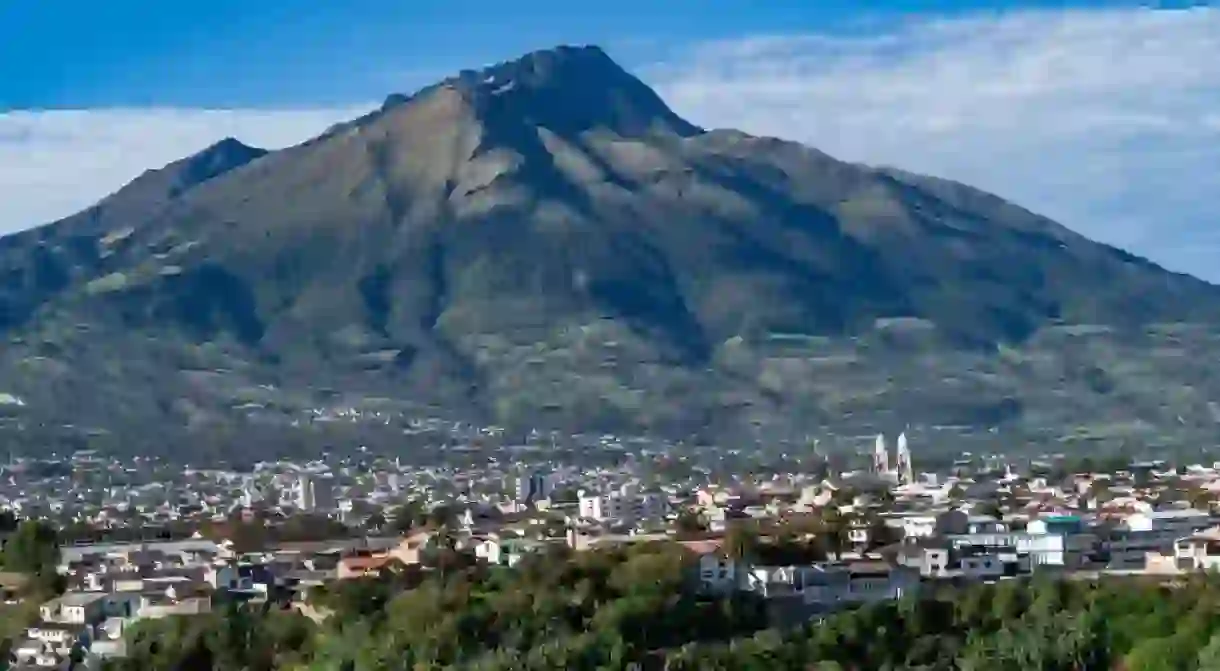Top Things to Do in Ibarra, Ecuador

Ibarra is the perfect destination for those seeking a weekend away from Quito, Ecuador’s bustling capital. Take in the view at Volcan Imbabura or marvel at the White City, Ibarra’s historic centre featuring impressive colonial architecture. Here we list the top things to do and see in Ibarra, Ecuador.
Olor a Café
Cafe, Coffee
With its atmospheric high ceilings, deep, comfy sofas and book-lined walls, Olor a Café is a mandatory pitstop in the city’s historic old town. On the menu is the works, with coffee, beer, juices, steaks and sandwiches all on offer, and everything’s served with impressive attention to detail. This is one of the best places to fill up before or after a busy day sightseeing in Ibarra. The view out onto a leafy park also allows for great people watching.
Centro Cultural El Cuartel
Museum
During the wars for Ecuador’s independence, Ibarra was a strategic military hub, the last stronghold before reaching Quito. The Centro Cultural El Cuartel was once a massive barracks for soldiers, but now it serves as Ibarra’s most important art museum. Modern works by Ecuadorian fine artists as well as an impressive collection of historical works are on display here, including some fascinating pre-Columbian artefacts. You’d never believe this palatial building had been seriously damaged in an earthquake; it now stands fully restored.
The Old Town
Architectural Landmark
Ibarra residents take great pride in the many cathedrals and churches in the old town, and for good reason. Unique architecture abounds, with religious motifs and wood carvings providing stunning detail to many of the buildings. Insider tip: take a walk down the cobbled streets in the early evenings to enjoy the cool mountain breeze. Don’t skip the quieter backstreets where you’ll find neighbourhood cafés surrounding lush parks.
La Botica Café
Cafe, South American
A magnificent two-storey historic mansion in the old city centre is the setting for La Botica Café. Having dinner on the balcony overlooking the historic streets makes for a memorable moment in Ibarra. We recommend ordering the celebrated plantain dishes which come topped with everything from shrimp and guacamole to shredded beef and mozzarella. To finish things off, go for La Botica’s homemade cheesecake. Their hot chocolate also has legions of fans.
Yahuarcocha Lake
Natural Feature

The mystical green waters of Yahuarcocha Lake are of glacial origin and they shimmer with intensity. Its name literally means lake of blood in the Kichwa language because it’s where an ancient battle between the Incas and rival Caranquis people took place. On the outskirts of Ibarra, the lake is easily reached by city bus. Rent a pedalo and cruise around until your stomach juices are telling you it’s time for a dish of local fish at a lakeside restaurant.
Tren de la Libertad
Architectural Landmark
As part of a government initiative to bring passenger rail back to the country, the Tren de la Libertad is one of the most enjoyable ways to immerse yourself in some incredible Ecuadorian scenery. Ready to board? The journey starts in Ibarra, with the train going past steep canyons and towering volcanoes. En route, glimpse villages where Afro-Ecuadorian heritage is preserved in food, music and beautifully carved masks. The culture of these people also prevails in Salinas where the train journey ends.
San Antonio de Ibarra
Architectural Landmark
Not even four km (2.5mi) south of the White City (as Ibarra is known) is the unhurried city of San Antonio de Ibarra, which is lined with galleries where artisans carve blunt timber into sculptures, decorations and furniture. There are more than a dozen of these traditional gallery workshops, including the gallery of famed wood sculptor Luis Potosi, who creates incredibly detailed and lifelike renderings. This is a city oozing charm and tranquillity, with a main plaza that entreats you to sit and people watch, possibly for an afternoon or more.
San Miguel Arcángel
Natural Feature
Get set for panorama drama. This popular mirador (viewpoint) is also home to a statue of the patron saint of the city, Arcángel Miguel. Just under two km beyond Ibarra, it makes for the perfect short but invigorating uphill hike. It’s a great place to admire the views over the city (especially at sunset) with Yahuarcocha lake and the towering Andean peaks in the distance. You can also see the hazy rooftops and streets of nearby towns such as San Antonio and Cotacachi.
Hacienda Zuleta
Independent Hotel, Hotel

Tucked into the awe-inspiring Avenue of Volcanoes is the Zuleta region, an easy 10km (6.2mi) jaunt south of Ibarra. It’s celebrated, and much visited, for its exquisitely detailed embroidery created by the indigenous and mestizo women of the area. One of the best places to check out this fine artisanship is at the Hacienda Zuleta, a 17th century colonial-era working farm that is the former home of ex-president Galo Plaza Lasso. The weekend market promotes responsibly produced Zuleta embroidery as well as cheese which is among the gastronomic items created on premises.
Helados de Paila Rosalía Suárez
Ice Cream Parlour, Dessert
You’ll find Helados de Paila Rosalía Suárez sold all over Ecuador, so no visit to Ibarra is complete without trying this nationally revered ice cream. Founded in 1896, this old school ice creamery employs a traditional method, hand mixing fresh fruit and ice in a large round pan. Their strawberry variety, made using local fruit, is justifiably famous, but exotic flavours including naranjilla (a cross between an orange and a tomato) and taxo (banana passionfruit) are essential eating.
Tours & Trips in Ecuador
Architectural Landmark

Planning your next adventure? Discover the small but mighty country of Ecuador – be it in the rustic highlands of Cotopaxi National Park, the dense rainforests or the Amazon, or the surreal Galapagos Islands, get your adventurous fix with our vacation-packages.













